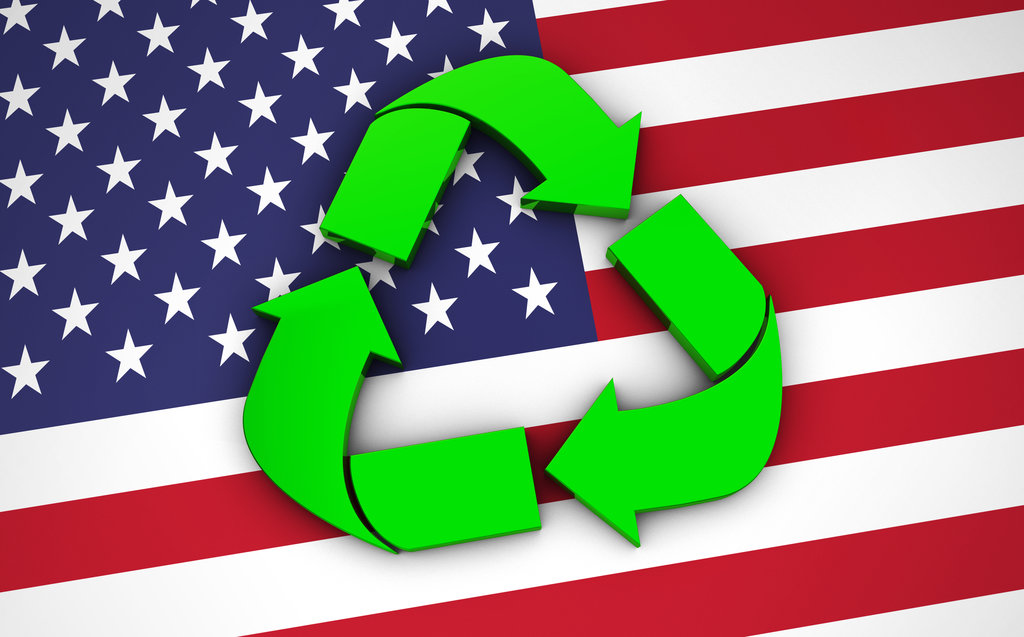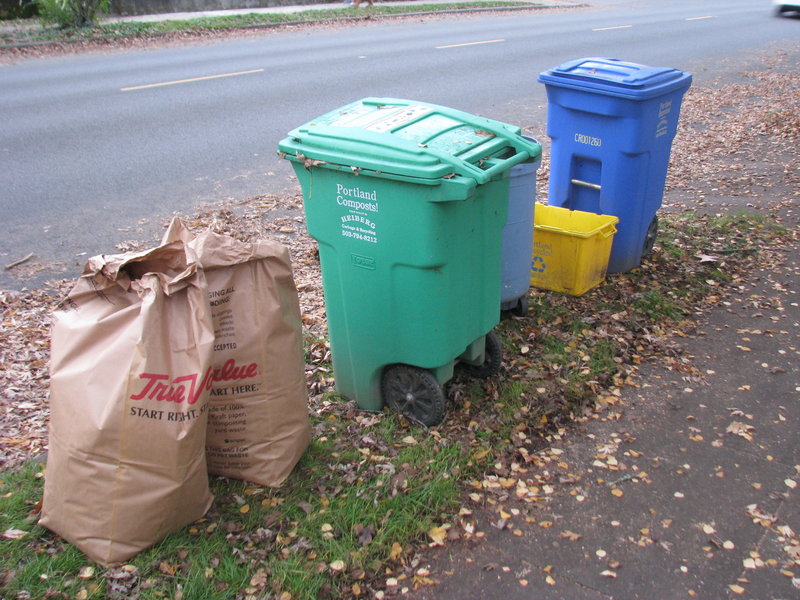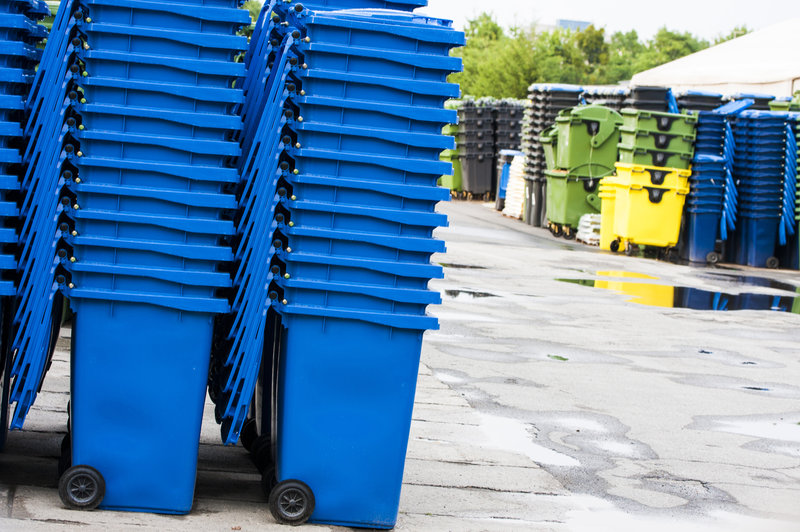 California has under-subsidized its container redemption centers to the tune of $43 million in recent years, leading a significant number of them to close, according to the Container Recycling Institute.
California has under-subsidized its container redemption centers to the tune of $43 million in recent years, leading a significant number of them to close, according to the Container Recycling Institute.

 California has under-subsidized its container redemption centers to the tune of $43 million in recent years, leading a significant number of them to close, according to the Container Recycling Institute.
California has under-subsidized its container redemption centers to the tune of $43 million in recent years, leading a significant number of them to close, according to the Container Recycling Institute.
 While recycling may have been on the defensive in recent months, a survey indicates that the vast majority of Americans are still motivated to divert materials.
While recycling may have been on the defensive in recent months, a survey indicates that the vast majority of Americans are still motivated to divert materials.
One of the country’s largest corrugated packaging companies announced plans to open a recycled paperboard mill next to its existing box manufacturing operation in Valparaiso, Indiana.
Georgia-based Pratt Industries will lay out $260 million on the new mill and claims the operation will bring nearly 140 jobs to northwest Indiana. Construction is expected to be completed by July 2015, and the facility will be able to produce 360,000 tons of recycled paper annually.
The Indiana Economic Development Corporation offered the company up to $1.2 million in conditional tax credits and up to $200,000 in training grants based on the company’s job creation plans. A number of other energy and infrastructure incentives were also offered to the company. “With the pro-growth business environment we’ve worked hard to create, companies can expand here with confidence,” said Indiana Gov. Mike Pence.
The paper mill is Pratt’s fourth, joining others in Georgia, Louisiana and New York. Pratt produces all of its paper and packaging from 100 percent recycled products, and its New York mill, located on Staten Island, recently announced it had recycled 5 million tons of paper since opening in 1997. The company says it currently processes roughly 3,000 tons of recovered paper across all its sites each day.
Pratt executives said they considered 100 locations for their latest mill before narrowing the search down to a pair of locations in Indiana and one in Ohio.
The opening of a large-scale recycled paper mill is an encouraging development for the recycled fiber industry, which has faced demand struggles in recent years as consumers have continued to shift toward electronic media.
Numbers released late last week by the U.S. EPA suggest the nation’s recovery of recyclables is at a standstill, with recycling and composting flat in 2013. Industry experts pointed to the shifting material mix as a primary factor in the stagnant U.S. recycling rate.
According to the EPA’s nearly 200-page report, the U.S. generated 254 million tons of municipal solid waste in 2013 and recovered 34.3 percent of it – 0.2 percentage points below 2012’s recovery rate of 34.5 percent and 5.8 percentage points higher than the 2000 rate of 28.5 percent.
While some material types experienced increased recovery in 2013, including scrap electronics, recovery rates for paper, plastics and food – segments that combine to account for roughly 54 percent of overall generation – were all within a percentage point of 2012 totals.
The 2013 paper recovery rate, by far the highest among major material categories, was 63.3 percent in 2013, while the plastics recovery rate (9.2 percent) and food recovery rate (5.0 percent) remained in the single-digits.
“Sooner or later, people have to ask themselves what is a realistic recovery rate [to achieve]?” Chaz Miller, director of policy and advocacy at the National Waste and Recycling Association, said in an interview. “I think it’s clearly more than 34 percent, but I think a lot of cities and states hurt themselves by setting unrealistic, unachievable goals.”
One challenge noted by Miller and others in the industry is the so-called evolving ton, the phenomenon of increasingly lightweight, sometimes plastics-based packaging replacing heavier, more easily recyclable paper and glass packaging. In other words, a ton of recyclables today is harder to amass than it was a decade ago.
Keefe Harrison, the executive director of The Recycling Partnership, a group that helps support and assist municipal recycling programs nationwide, said single-stream programs have grown in the U.S. The programs have led to higher recovery rates on a community-by-community basis, but they have not been immune to today’s lighter ton.
“What I see when I look at the report is not an indicator of consumer apathy or even declining rates – I see a changing packaging scene,” Harrison said. “This speaks to me more about the evolving ton than the impact of single-stream to deliver more material.”
Plastics generation, accounting for 13 percent of the waste stream in 2013, has increased 27 percent since 2000 while paper generation has fallen by almost 22 percent. In that same time frame, glass volumes have decreased by about 10 percent.
Bill Moore, an expert on recovered paper markets and president of Moore & Associates, said it’s safe to predict annual paper generation to fall further in the next five to 10 years.
According to Moore, annual paper generation could soon reach a bottom of 60 million tons (in 2013, U.S. paper generation was 68.6 million tons). He predicted in the coming years the rate at which the material is recovered will be “flat at worst, but probably has a small growth potential left.”
One material that might need to pick up the recovery slack, experts say, is food scraps. Food waste increased by 2 percent in 2013 and now accounts for about 15 percent of the overall waste stream. The food recovery rate, meanwhile, is at 5 percent.
Nora Goldstein, the editor of organics-recovery publication BioCycle, says just 2 percent of U.S. households currently have curbside food scrap collection, but she noted efforts to donate unused food are gaining ground.
“The good news, despite these realities, is that generators of food waste continue to be interested in diversion of this stream from disposal,” Goldstein said. “And demand for quality compost is growing rapidly.”
On the plastics front, increasing the recovery rate has been a unique challenge, said Steve Alexander, the executive director of the Association of Postconsumer Plastic Recyclers.
An American Chemistry Council’s Plastics Division report, “Making Sense of the Mix: Analysis and Implications for the Changing Curbside Recycling Stream,” research done by Resource Recycling also found that more plastics in the curbside bin are helping create opportunities for plastics recyclers. Alexander says that the industry is responding.
“Growing the [recovery] rate as the denominator is growing is tough, but it’s also a nice problem to have because it means there is a sizeable opportunity in plastics recycling,” Alexander said.
 The United States’ recycling rate notched up slightly in 2014, according to statistics released by the U.S. Environmental Protection Agency.
The United States’ recycling rate notched up slightly in 2014, according to statistics released by the U.S. Environmental Protection Agency.
The codes the government uses to identify industries can be confusing for companies to navigate. The National Waste & Recycling Association (NWRA) has published a white paper providing guidance on the codes specific to the waste and recycling industries.
It’s here! America Recycles Day – the nationwide event that encourages recycling – is being marked by thousands of events all across the country.

As programs and companies around the nation take part in the annual U.S. celebration of materials recovery, we chatted with a representative of Keep America Beautiful (KAB).
 The Closed Loop Fund (CLF) issued its first public progress report on Nov. 14. The report dove into CLF’s nearly $20 million in initial investments in nine projects since its 2014 founding.
The Closed Loop Fund (CLF) issued its first public progress report on Nov. 14. The report dove into CLF’s nearly $20 million in initial investments in nine projects since its 2014 founding.
 Even the most well-intentioned residents don’t always recycle. According to a recent set of studies, the reason why may be more complicated than just laziness or a lack of access.
Even the most well-intentioned residents don’t always recycle. According to a recent set of studies, the reason why may be more complicated than just laziness or a lack of access.
